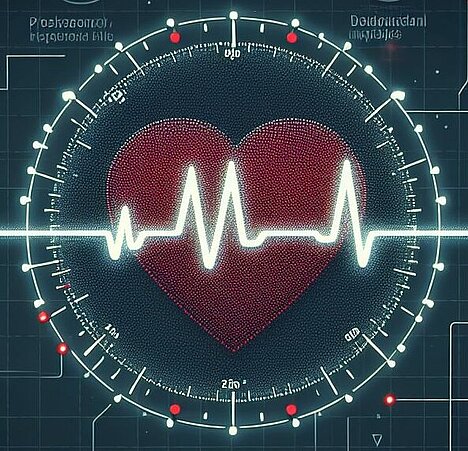Bradycardia

Bradycardia is a medical term that describes a heart rate that is too slow. This means that the heart makes less than 60 beats per minute. In dogs, bradycardia can have various causes, such as heart disease, hypothyroidism or poisoning. In this article, you will learn how to recognize bradycardia in your dog, what the consequences can be and how it is treated.
How do I recognize bradycardia in my dog?
To measure your dog's heart rate, you can put a finger to his chest and count the beats for 15 seconds. Then multiply the number by four to get the beats per minute. Normally, a dog's heart rate is between 70 and 160 beats per minute, depending on their size and activity level. If you notice that your dog has less than 60 beats per minute, you should take him to a veterinarian.
Bradycardia can also cause other symptoms, such as
- Weakness
- tiredness
- shortness of breath
- Fainting
- Blue tongue or gums
These symptoms can indicate a lack of oxygen in your dog's body, which can be life-threatening. It is therefore important to act quickly and have your dog examined.
What are the advantages and disadvantages of bradycardia for my dog?
Bradycardia is not always a sign of a serious condition. Some dogs naturally have a lower heart rate than others, especially if they are very athletic or relaxed. In this case, bradycardia has no negative impact on your dog's health or well-being.
However, bradycardia can also be a symptom of an underlying medical condition that needs to be treated. For example, bradycardia may indicate heart block, where the electrical signals that make the heart beat are disrupted. This can lead to an irregular or intermittent heartbeat, which increases the risk of cardiac arrest. In this case, your dog may need a pacemaker to stimulate the heart and normalize the heart rate.
Bradycardia can also be influenced by other factors, such as
- Age
- medication
- stress
- temperature
- anesthesia
Bradycardia is a heart rate that is too slow and can have various causes and consequences in dogs. Some dogs have a natural bradycardia that does not harm them. Other dogs have abnormal bradycardia that needs to be treated. To recognize and evaluate bradycardia in your dog, you should measure his heart rate and look for other symptoms. If you have any doubts or your dog feels unwell, you should always consult a vet.
The authors assume that a veterinarian should be consulted if an animal is ill and that medication should only be taken after consultation with a doctor or pharmacist. Only an individual examination can lead to a diagnosis and treatment decision.
We help you find the nearest vet → This way